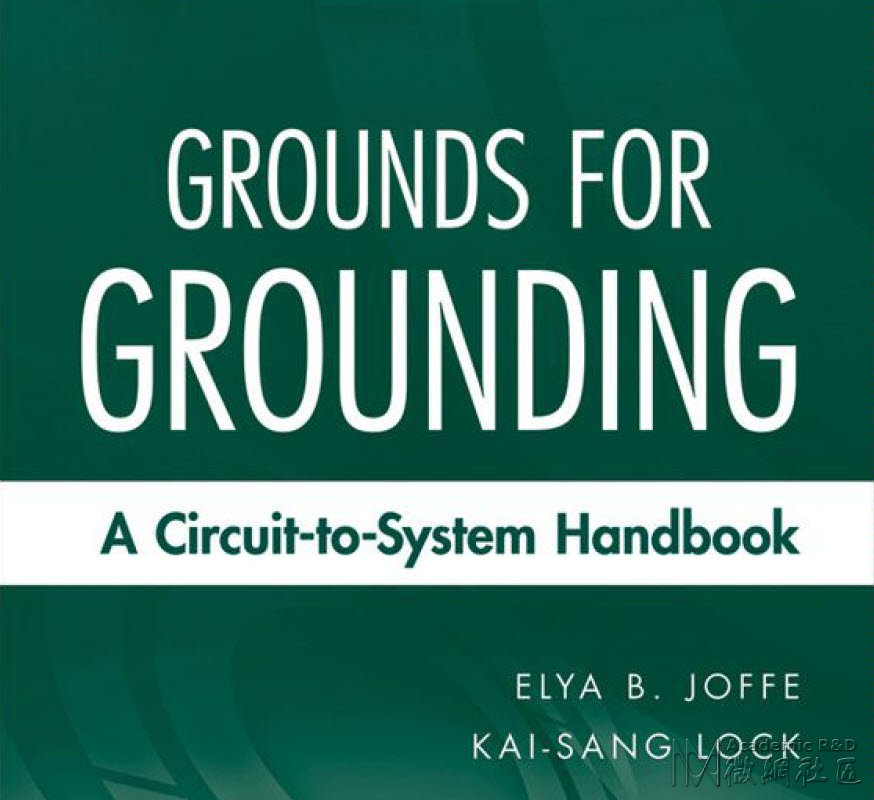Grounds for Grounding - A Circuit to System Handbook
Elya B. Joffe
Kai-Sang Lock
2010
(又是一本SI-PI方面难得的好书)

[Contents]
Foreword
Preface
1. Overview
2. Fundamental Concepts
2.1. Maxwell’s Equations Demystified
2.2. Boundary Conditions
2.3. Intrinsic Inductance of Conductors and Interconnects
2.4. Nonideal Properties of Passive Circuit Components and Interconnects
2.5. Return Current Path Impedance
2.6. Transmission Line Fundamentals
2.7. Characteristics of Signals and Circuits
2.8. Interaction between Sources to Radiated Fields
3. The Grounds for Grounding
3.1. Grounding, an Introduction
3.2. Objectives of Grounding
3.3. Grounding-Related Case Studies
4. Fundamentals of Grounding Design
4.1. Ground-Coupled Interference and its Preclusion
4.2. Fundamental Grounding Topologies
4.3. Grounding Trees
4.4. Role of Switch-Mode Power Supplies in Grounding System Design
4.5. Ground Loops
4.6. Zoned Grounding
4.7. Equipment Enclosure and Signal Grounding
4.8. Rack and Cabinet Subsystem Grounding Architecture
4.9. Grounding Strategy Applied by System Size and Layout
5. Bonding Principles
5.1. Objectives of Bonding
5.2. Bond Impedance Requirements
5.3. Types of Bonds
5.4. Surface Treatment
5.5. Dissimilar Metals Consideration: Corrosion Control
6. Grounding for Power Distribution and Lightning Protection Systems
6.1. Introduction
6.2. Power System Earthing
6.3. Earthing for Low-Voltage Distribution System
6.4. Lightning Protection
6.5. The Earth Connection
6.6. Types of Earth Electrodes
6.7. Design of Earth Electrodes and their Layout
6.8. Measurement of Soil Resistivity, Earth Electrode Resistance and Earthing System Impedance
6.9. Reducing Earth Resistance
6.10. Bonding to Building Structures
7. Grounding in Wiring Circuits and Cable Shields
7.1. Introduction: System Interface Problems
7.2. To Ground or Not To Ground (Cable Shields)
7.3. Fundamentals of Cable Shielding
7.4. Shield Surface Transfer Impedance
7.5. Grounding Considerations in Signal Interfaces
7.6. Grounding of Transducers and Measurement Instrumentation Systems
8. Grounding of EMI Terminal Protection Devices
8.1. Filtering and Transient-Voltage Suppression—Complementary Techniques to Shielding
8.2. Types of Conducted Noise
8.3. Overview of Filtering and Transient Voltage Suppression
8.4. Grounding of Filters and Transient-Suppression Devices
9. Grounding on Printed Circuit Boards (PCBs)
9.1. Interference Sources on PCBs
9.2. “Grounding” on PCBs
9.3. Signal Propagation on PCBs
9.4. Return Path Discontinuities: “Mind the Gap”
9.5. Delta-I ([1]I) and Simultaneous Switching Noise (SSN) in PCBs
9.6. Return Planes and PCB Layer Stack-up
9.6.1. Image Planes
9.6.2. Frequently Used PCB Layer Stack-up Configurations
9.6.3. Local Ground Structures
9.6.4. Shield Traces
9.7. Cuts and Splits in Return Planes
9.8. Grounding in Mixed-Signal Systems
9.9. Chassis Connections (“Chassis Stitching”)
10. Integrated Facility and Platform Grounding System
10.1. Facility Grounding Subsystems
10.2. Grounding Requirements in Buildings or Facilities
10.3. Grounding for Preclusion of Electrostatic Discharge (ESD) Effects in Facilities
10.4. Grounding Principles in Mobile Platforms and Vehicles
APPENDIX A. Glossary of Grounding-Related Terms and
APPENDIX B. Acronyms
APPENDIX C. Symbols and Constants
APPENDIX D. Grounding Related Standards, Specifications, and Handbooks
APPENDIX E. On the Correspondence between Ohm’s Law and Fermat’s Least Time Principle
APPENDIX F. Overview of S Parameters
Index
没错, 只贡献给微网的朋友, 其他论坛或许也可找到, 但是质量不如, 比较看看...
